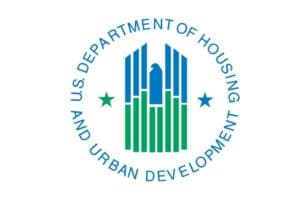Last week the Department of the Treasury and HUD sent their Housing Finance Reform Plans to President Trump following his March Memorandum, which ordered the reports. The Senate Committee on Banking, Housing and Urban Affairs held a hearing on Housing Finance Reform: Next Steps with HUD Secretary Ben Carson, Treasury Secretary Steven Mnuchin and FHFA Director Mark Calabria as witnesses.
Treasury’s Plan
Treasury’s plan calls for Fannie Mae and Freddie Mac to be released from conservatorship, have their Congressional government-sponsored enterprise (GSE) charters repealed, and be re-chartered by the Federal Housing Finance Agency (FHFA) as competitor guarantors. The FHFA would continue to regulate Fannie Mae and Freddie Mac, as well as any newly chartered guarantors.
The plan argues that an “explicit Government guarantee should be available to the re-chartered GSEs and to any other FHFA-approved guarantors of MBS collateralized by eligible conventional mortgage loans or eligible multifamily mortgage loans.” Fannie Mae, Freddie Mac and any new guarantors should compensate the Federal Government for this explicit Government guarantee through the periodic commitment fee.
The Treasury plan urges Congress to “replace the GSEs’ statutory affordable housing goals with a more efficient, transparent and accountable mechanism for delivering tailored support to first-time homebuyers and low- and moderate-income, rural, and other historically underserved borrowers, with a portion of the associated funding potentially transferred to HUD to expand its affordable housing activities.”
Treasury acknowledges the GSE’s Duty to Serve requirements and obligations to the Housing Trust Fund and Capital Magnet Fund but makes no specific recommendations on them other than to say, “These statutory mandates should be reformed to more effectively target support for affordable housing.”
The report highlights the rapid recent growth of the GSE’s multifamily business as concerning, especially within originations of uncapped green multifamily loans. Treasury calls on Congress to “implement a framework to limit the aggregate footprint of multifamily guarantors” and “limit the multifamily mortgage loans that are eligible to secure Government-guaranteed multifamily MBS to ensure a close nexus to a specified affordability mission.”
HUD’s Plan
HUD’s plan calls for restructuring the Federal Housing Administration (FHA) as an autonomous corporation within HUD, modernization of IT systems, creating the Office of Rental Subsidy and Asset Oversight (which would include Project-Based Rental Assistance, Housing Choice Vouchers, Rental Assistance Demonstration, Public Housing and the Real Estate Assessment Center) and eliminating the statutory RAD cap, among other changes.
HUD argues that “FHA’s activities have strayed away from its core mission” of “providing housing finance support to low- and moderate-income families that cannot be fulfilled through traditional underwriting, including targeting first-time and lower-wealth creditworthy homebuyers who benefit from FHA’s ability to provide affordable mortgage credit at fixed rates with lower down payments.” The report cites the growth of the use of down payment assistance (DPA) and cash-out refinancing as examples.
HUD recommends that FHA examine whether the premiums FHA charges for loans with down payment assistance adequately reflect the risks such loans pose. The report suggests that FHA establish a Homebuyer Sustainability Scorecard to measure the performance of FHA loans and then use the data to establish a tiered pricing system based on risk.
The report calls for FHA to continue to monitor its cash-out refinances closely to determine whether further action is necessary and ensure that programs and policies do not incent negative borrower behavior, such as equity stripping via cash-out refinancing.
